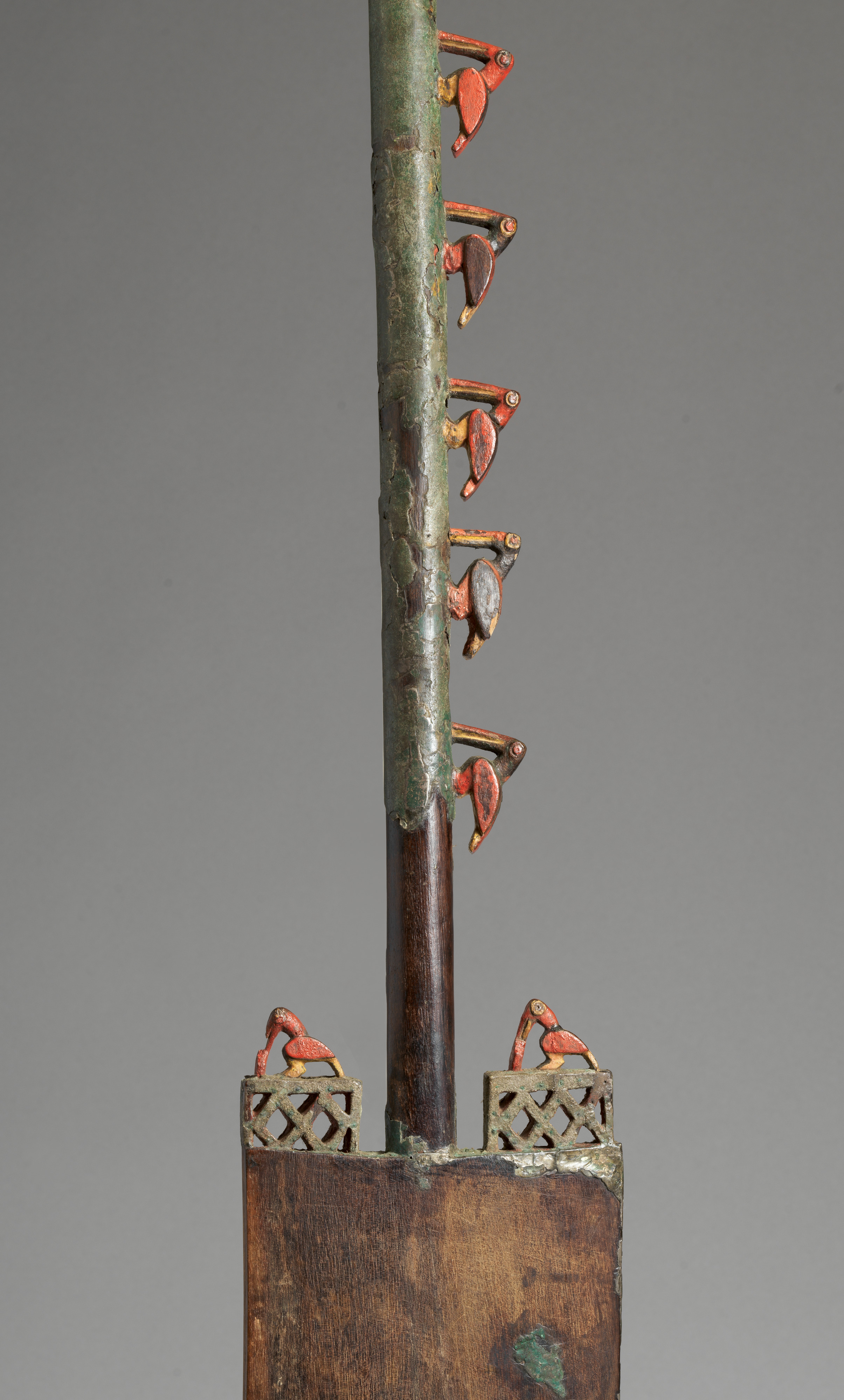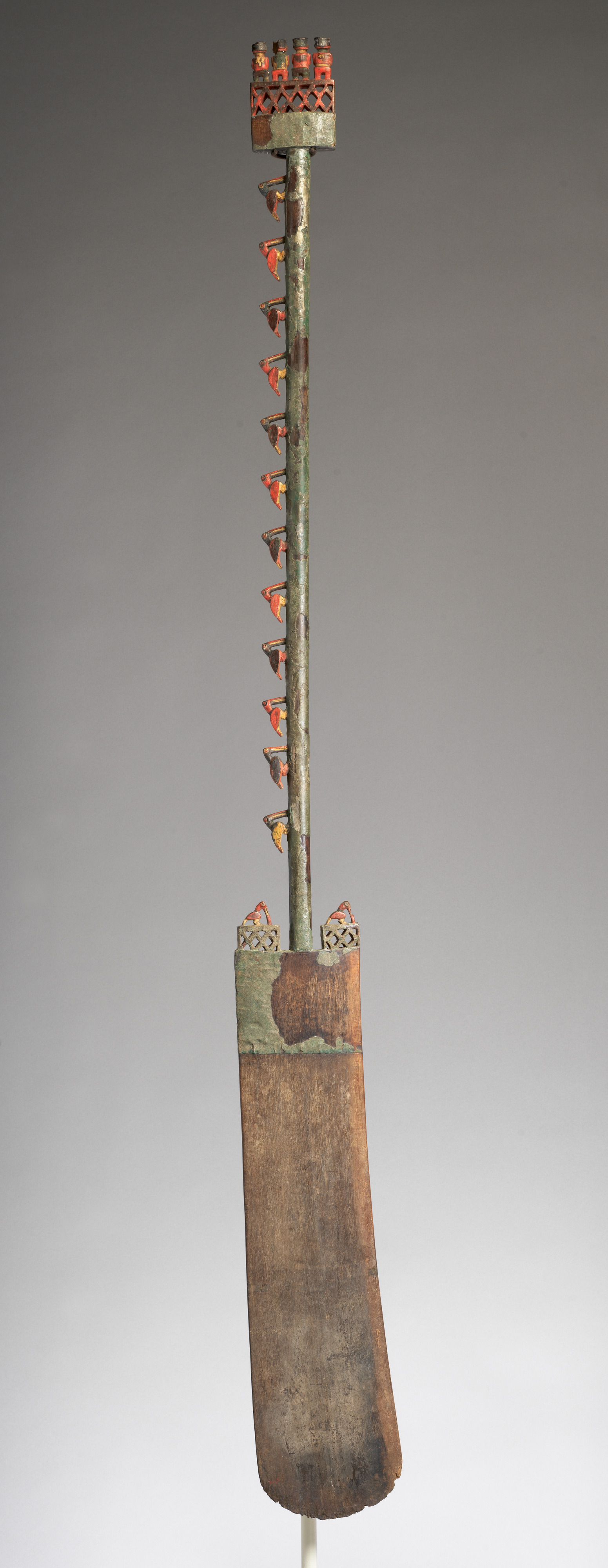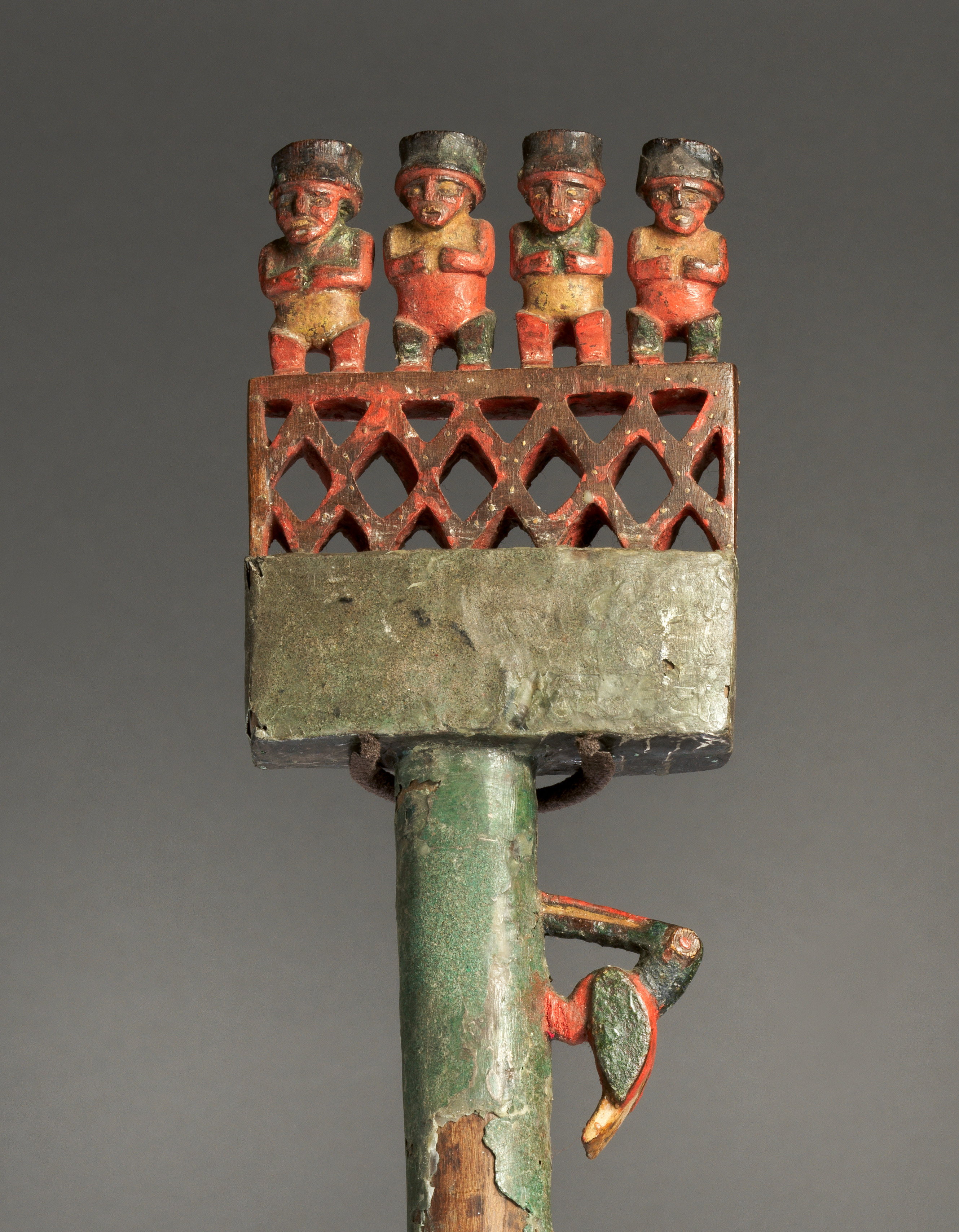Ceremonial digging stick
Not on view
This imposing sculpted board, made from algarrobo wood (Prosopis chilensis), features a plain lower section terminating in a rounded, paddle-like lower edge. A shaft with seabirds carved along one side links the lower section to a square upper section with openwork ornamentation and four figures. Two seabirds, perched atop openwork rectangles, were carved on the top of the paddle section, on either side of the shaft. Portions of the implement were once covered with a metal overlay. Remains of this sheeting can be seen from the upper part of the paddle section to the top of the top of the object, including silver on the figures’ headdresses. Traces of red, yellow, and green pigment also remain.
All of the scientifically excavated examples of these digging boards have been found in the Chincha and Ica valleys on Peru’s South Coast and date to the 15th–16th century. The function of these objects has been a lively topic of discussion among scholars for many years. Sometimes called tomb markers, they have also been called remos (Spanish for paddle or oar) because of their resemblance to the rudder boards used on Precolumbian boats described by Spanish chroniclers (Koda, 1989; Kvietok, 1997). However, no evidence of blade deformation due to water immersion, as one might expect from nautical implements, has been observed. In contrast, analysis of use patterns of similar, but smaller, objects found in scientifically excavated tombs indicates that they are probably representations of agricultural implements used for preparing the soil for planting. Although this example and those of similar shape and size show no use patterns and would be awkward to handle, smaller wooden carvings with flat blades show abrasion patterns on the bottom ends consistent with having been thrust into soil containing small rocks. Tools with broad flat ends tapered at both the medial and axial edges would have been used to turn the soil similar to a plow, whereas other wooden objects with blunt or rounded ends would have served to break up the clods. Large, finely carved and painted boards such as the present example were likely ceremonial, used perhaps in rituals dedicated to agricultural fertility.
The coast of Peru between the waters of the Pacific Ocean and the abrupt rising of the Andes Mountains is narrow and extremely dry. The cold waters of the Humboldt current, which flow along the west side of the South American continent, supports some of the richest marine life in the world, but at the same time they cause atmospheric conditions that prevent rain from falling in the coastal valleys. The coastal desert is bisected by rivers carrying water from the Andes, although little of this sustenance ultimately reaches the valley floors. It was only with assiduous water management, specifically irrigation agriculture, that the ancient inhabitants were able to take advantage of the fertile valley soils.
The very aridity of the land, however, preserved many perishable archaeological remains. Funerary offerings made of fragile organic materials, such as gourd, bone, wood, feathers, and fibers, would not have survived the centuries of burial in more humid environments. The southern coast is the driest in Peru, and since the mid-nineteenth century many antiquities made of organic materials have been unearthed there. The Ica and Nasca valleys have yielded significant groups of textiles, wood objects, and other works of perishable substances, shedding light on aspects of ancient Andean visual traditions that would otherwise be unknown.
Further Reading
Jones, Julie. Art of Empire: The Inca of Peru. New York: The Museum of Primitive Art, 1964. See especially pp. 42-43, 46-48.
Koda, Yae. Prehistoric Agricultural Implements of the South Coast of Peru. PhD dissertation, University of California, Berkeley, 1989.
Kvietok, D. Peter. "Digging Sticks or Daggerboards? A Functional Analysis of Wooden Boards from the Ica Region," Andean Past: 1 (1987), pp. 247-274.
The Metropolitan Museum of Art. Art of Oceania, Africa, and the Americas from the Museum of Primitive Art. New York: The Metropolitan Museum of Art, 1969, no. 536.
Museum of Primitive Art. Masterpieces in the Museum of Primitive Art: Africa, Oceania, North America, Mexico, Central to South America, Peru. Handbook series. New York, NY: Museum of Primitive Art, 1965, no. 131.
Schmidt, Max. Kunst und Kultur von Peru. Berlin: Propylaen Verlag, 1929. See especially pp. 428, 429, 431, 430, 432, 433.
Due to rights restrictions, this image cannot be enlarged, viewed at full screen, or downloaded.
This artwork is meant to be viewed from right to left. Scroll left to view more.





